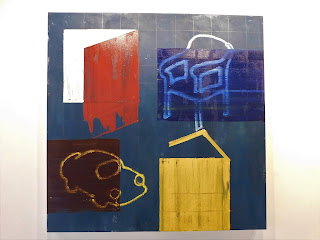Mindful Moments Well Met
 |
| Gerhardt Zimmermann |
 |
| Jenny Robinson |
 |
| Margaret Brouwer |
By Tom Wachunas
“…But as the sun rises above the horizon, a little breeze picks up and the boat begins to move more steadily…” - Margaret Brouwer
Please forgive my
extreme tardiness in posting these comments, but…drum roll, please. Live, from
Umstaddt Hall in the Zimmermann Symphony Center, The Canton Symphony Orchestra
(CSO), with Maestro Gerhardt Zimmermann conducting, commenced the 2021-2022
concert season on Sunday, October 10.
https://www.cantonsymphony.org/the-season-overture/
In lieu of a detailed piece-by-piece review of
the concert, I simply want to share with you a few “moments” from that evening
that filled me with especially deep gratitude as well as a renewed
sense of anticipation.
The October 10
concert opened with Northeast Ohio composer Margaret Brouwer’s The Art of
Sailing at Dawn. Written during the pandemic, the optimistic and
exhilarating work depicts a morning sail, through the tranquility of smooth
water and the exuberance of crashing waves, the sails filling with brisk winds.
Here are Brouwer’s program notes:
“Imagine
preparing to board a sailboat at dawn.
The water is completely calm.
There is hardly a sound except the occasional early morning birdcall and
sound of a ripple breaking on the shore.
Leaving the dock, you are barely moving on the calm water. But as the
sun rises above the horizon, a little breeze picks up and the boat begins to
move more steadily. As the day arrives,
the breeze becomes a steady wind, and occasional big waves smash into the boat
before everything is calm again. The
technical requirements and knowledge it takes to sail a big boat, are
exhilarating, but are outweighed by the feeling of the peace and the emotional
response to the beauty and power of the water and open space. It reminds me of the popular 1974 book, Zen
and the Art of Motorcycle Maintenance which demonstrates that rational
expertise and Zen-like “being in the moment” can harmoniously coexist.”
In many ways,
Brouwer’s words aren’t only a superbly concise description of her engaging and
beautiful music, wondrously rendered here by the orchestra, but also a timely reminder
of what could best be called the CSO’s promising dawn after a long night of
pandemic-induced absence from our midst.
And then there was an
equally enticing performance of Jacques Ibert’s 1932-33 work, Flute Concerto,
here featuring the electrifying solo debut of CSO Principal Flute, Jenny
Robinson. Ibert’s work is a veritable romp through complex rhythm changes,
aural colors and orchestral textures that pose dizzying technical challenges
for the soloist. Robinson navigated all of them with flawless, truly robust
virtuosity. She was wholly mesmerizing in the way she embraced the music’s
constantly shifting energies between jaunty frivolity, tender lyricism, and
poignant introspection.
Altogether, the concert
was a refreshing burst of light and an enlivening gust of fresh air – an
inspired announcement of the CSO’s steady return to the space of our lives. And
so in the aforementioned spirit of gratitude and anticipation, I’ll leave you
with this link to info on the next CSO concert on November 14 at 7:30 p.m..
Consider it an invitation to experience the illuminating and healing power of
live orchestral music for yourself.











